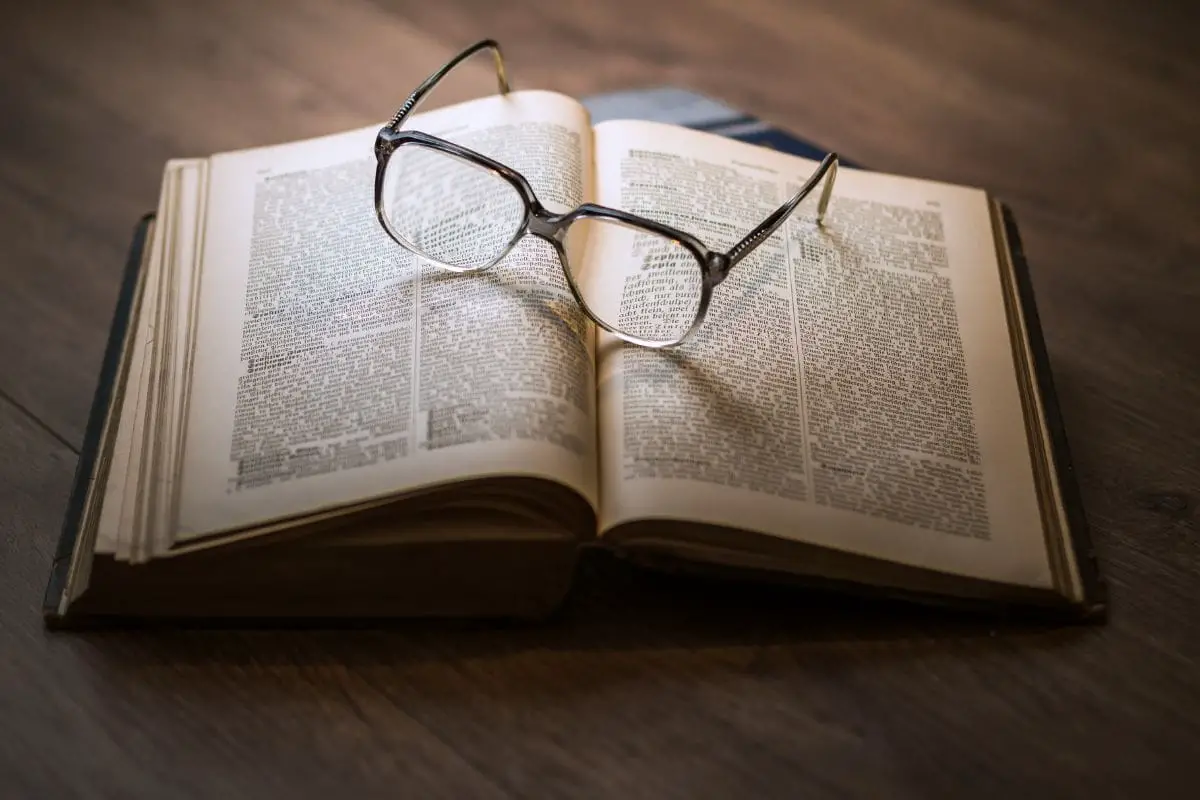Literary Themes: Exploring The 13 Most Popular Literary Themes
Theme within literature is one of the most hot-button topics for scholars and those who just like to read between the lines. In many ways, a theme can be considered the most important aspect of a story.
It is the point of it all, the thing that underpins everything you’re reading; the foundation from which story, plot, character, and symbolism can be layered on top of.

If you’ve ever taken an English literature class, you’ll know well enough how important it can be.
But why is theme so important? Does every piece of literature have to have a theme? What are some examples of the most important themes within literature?
If you find yourself wondering these questions, you won’t be the first!
In this article, we’re going to take a look at literary themes and give you a list of the 13 most common ones that you’ll find when delving into the world of stories and storytellers.
What Is Theme?
Before we get onto our list, let’s first take a quick look at what theme is and why it’s important for stories. In short, a ‘theme’ can be defined as the central idea or ideas that a story is exploring.
In many ways, you can think of a theme as the ‘heart’ of a story—the thing that the author is trying to convey or explore within the work.
It’s worth noting that most great works of literature often feature multiple themes within the same story, and there is often debate from scholars and critics about what a theme is and what it is not.
The most important thing to keep in mind is that a story will have a theme no matter what it is about.
A theme can sometimes come from an author’s intention, or it can come as a result of the story they’re telling. Let’s throw out a hypothetical here to make this clearer.
One of the biggest themes of the classic fairytale Little Red Riding Hood is the forest and how this represents the unconscious mind, or the dangerous parts of the world where humans fear to walk.
This can clearly be identified as a theme, but the author of Little Red Riding Hood likely wasn’t thinking about this when they came up with the story and told it for the first time.
It becomes a theme because it is in the story, not because the author wanted it to be.
However, with some of the themes in our list below, it will become clear that some authors think very deeply about themes and ensure that readers can identify them within their stories.
Both ways work well, the path is simply different.
12 Of The Most Popular Themes In Literature
1. Lost Innocence
This is one of the most popular themes you’ll find within literature and one that you can trace all the way back to some of the earliest works of literature ever written.
In short, this theme involves a person (sometimes a child) and their sudden loss of innocence.
The oldest example of this theme is probably in Genesis in the Holy Bible, where Adam and Eve eat from the tree of knowledge and lose their innocence.
As you can probably tell, this is a fundamental issue that all humans experience at one point or another, and because of this, it has been repeated as a theme constantly throughout time.
A more modern example of this theme within a story is Harper Lee’s legendary novel To Kill a Mockingbird which features two children coming to terms with the injustice of racial segregation in the deep south as they transition from childhood to adulthood.
2. Childhood
On this note, let’s take a look at how childhood works as a theme within the literature. Everyone alive has had or is going through their childhood, and because of this, it can be seen as a universal theme.
Writers have used this to great effect, and there are a lot of stories that use childhood as a theme, or as a springboard to explore more complicated topics.
A really great example of a book that uses childhood as a theme is IT by Stephen King.
In this novel he merges childhood and the imagination of children with the horrors of adulthood, placing a killer clown in the center of the story as a metaphor for this difficult transition.
It’s also worth noting that a butterfly is a common symbol for childhood, so look out whenever you see one in a novel for what it might represent.
3. Power

This is a much larger theme, but you’ll find it in a lot of books. Power is central to many human relationships, as well as government structures across the world.
Because of this, you’ll likely find power in a lot of books and pieces of literature.
One book/series that explores power very well is George R.R Martin’s A Song of Ice and Fire, where the central plot is all to do with different noble houses of a fantasy world trying to gain control of the kingdom of Westeros.
that deal with the theme of power are often critical of it, as there is great historical basis for how power corrupts humans and causes death and destruction.
4. Societal Status/Wealth
This is related to our last theme but slightly different. If you want to see a book that properly explores wealth and status, you should look no further than F. Scott Fitzgerald’s masterpiece The Great Gatsby.
Without delving into spoilers (in case you haven’t read it), this book is all about a man’s obsession with leading a perfect life and attaining massive wealth and status within society.
This theme is something all humans contend with in one way or another, which is why it is one of the most popular/common themes in all of literature.
5. Immortality/Youth
All humans age and eventually die, and this is something that many authors have tackled over the course of time.
The Picture of Dorian Grey by Oscar Wilde is probably the most famous example of a story that deals with this theme, but it also has a lot of other themes.
You could also say that any story that has a character who is immortal or scared of death deals with this in some way.
For example, anything concerning vampries—from Dracula to Twilight—explore this theme as vampires are immortal and many of them eternally young.
This theme is usually deconstructed by authors and examined to see what it would be like if someone was to stay forever young.
It’s worth noting that obsession with youth often ends in tragedy—so make of that what you will.
6. Fate
This is a common literary theme that can be traced all the way back to the classics—that is to say, anything from ancient Greece or Rome.
The ancient greeks saw fate as a thread that can be cut at any moment and believed that all humans must eventually contend with it.
Whether you believe in free will or not, this is a central theme in many people’s lives, and authors love to use it as a literary device.
A great example of this is the character of Achilles in the Illiad, who is destined to become the greatest warrior in the world, but also to die at a young age.
7. Secrets/Illusions
Donna Tartt’s debut novel ‘The Secret History’ once had a working title of ‘God of Illusions’ and in this, we can see how closely linked the two themes are.
The novel deals with a group of classics students who murder one of their classmates in order to conceal a layered web of terrible secrets.
In this novel, Tartt uses many layers of illusion to keep the reader guessing and comment upon the nature of beauty and meaning.
You could say that most novels revolve around some type of secret, whether this is a small one, or central to the plot.
Secrets are common in all human lives and because of this, you’ll see this repeated as a theme throughout literature.
8. Death
Is there anything more universal than death? You’ll find death to be one of the most common themes in all of literature and this is because of how prevalent it is in everyone’s life.
Every murder mystery, every story of gallant heroes fighting battles, or people trying to reanimate corpses deals with death in some way.
So how is death often presented as a theme within literature?
Bones and skulls are a great example! In Terry Pratchett’s classic fantasy book series Discworld, death is a character simply called Death.
He’s simply the grim reaper and comes to shepherd souls into the afterlife.
If you want to see how this theme is put into a physical character and used throughout the series as both a plot device and a theme, this is a great place to start!
9. Good Vs Evil

This is another classical theme that you will find used over and over by the author.
Although good and evil can sometimes be subjective depending on the author in question, the battle between these two moral states is frequently used as a way for readers to know who they are rooting for and who they should be booing.
The best example we have to explain this theme is probably The Lord of The Rings by J. R. R Tolkien.
This story sees the races of Middle Earth bound together to try and stop the Dark Lord Sauron from taking over middle earth.
In these books, there is a clear division between good and evil, and Tolkien uses this to reflect the real world, and show how the small actions of a few good people can change the world.
In this case, it’s hobbits—and let’s be honest here, who doesn’t love hobbits?
10. Prophecy
This one is similar to fate but slightly different. In the 5th novel of the Harry Potter series by J.K Rowling, we find out that there is a prophecy between Harry Potter and Lord Voldemort.
The prophecy is that neither can live while the other survives.
This is a good example of how a prophecy can effect the outcome of a story, and how it foreshadows what eventually happens towards the end of the novel.
Another good example of prophecy within a classical piece of literature is in Oedipus Rex, an ancient greek tale that sees an individual grappling with a prophecy created before he was born.
Obviously, this links very much to the idea of fate, but prophecy is a vital part of many stories and something you should look out for whenever you’re reading.
11. Motherhood/Fatherhood
These themes can be tackled individually or together and is an important part of many pieces of literature.
Motherhood/Fatherhood is often portrayed as positive or negative by authors in the characters they create, then explored as a reflection of their own beliefs and experiences.
A novel that looks at the positive aspects of a father/son relationship is Cormac McCarthy’s The Road, which follows a boy and his father as they try to survive in a desolate, post-apocalyptic world.
A novel that explores the more negative aspects of parental relationships would be We Need To Talk About Kevin by Lynne Ramsay, who uses great tension to examine a mother and son relationship that is bad from the very start.
12. Oppression Of Women
This is a common theme within feminist literature and is often explored by authors from a historical and modern lens.
One of the most notable modern examples of this theme being used as central in a novel is The Handmaid’s Tale by Margaret Atwood.
This novel creates a dystopian world where women and their reproductive rights are heavily controlled by men.
By using this theme within a novel, the author is able to convey truths that were present in history or in the modern day.
It’s a great example of a humanist or political theme, and whenever you encounter something like this you should know that it’s most likely a direct message from the author.
13. Human Nature/Violence
This is something that many people have conflicting opinions about, and the sheer variety of different books throughout history should give you an understanding of how controversial these themes are.
Is violence innate within humans?
This is something that William Golding seems to be saying in his novel Lord of the Flies, where a group of British schoolchildren is trapped on a deserted island and forced to fend for themselves.
As the story progresses, they begin to fall into barbarism and a horrifying series of events unfold.
This is a great example of a novel that explores human nature/violence through shock and a tightly woven, allegorical story.
Any story that attempts to speak about violence is talking about human nature in some way, or at the very least the history of humankind and how power can be gained or lost through way of violence.
Final Thoughts
To wrap up, we want to point out that our list of 13 different themes is really only the beginning.
There are a lot of different literary themes, and many of them have small variations that mean you can categorize them as something completely different.
Popular themes within the literature are vital to examine and consider when reading, as they will enrich your reading experience and get you closer to the message the author was trying to convey with their words.
It’s worth noting before we end that the theme of a story often comes as a result of an individual’s reading.
For example, you might read Harry Potter and think that wealth is a very important theme, but for somebody else, it might not seem so much of a theme at all.
Theme is subjective in some senses, and often what is a ‘valid’ theme or not comes down to the general consensus from critics/scholars around a certain book.
We hope that this article has helped you to understand some of the most popular themes within literature, and that you’re now a lot more confident about what they mean! Happy reading!
- About the Author
- Latest Posts
Stuart Conover is a father, husband, published author, blogger, geek, entrepreneur, horror fanatic, and runs a few websites including Horror Tree!












